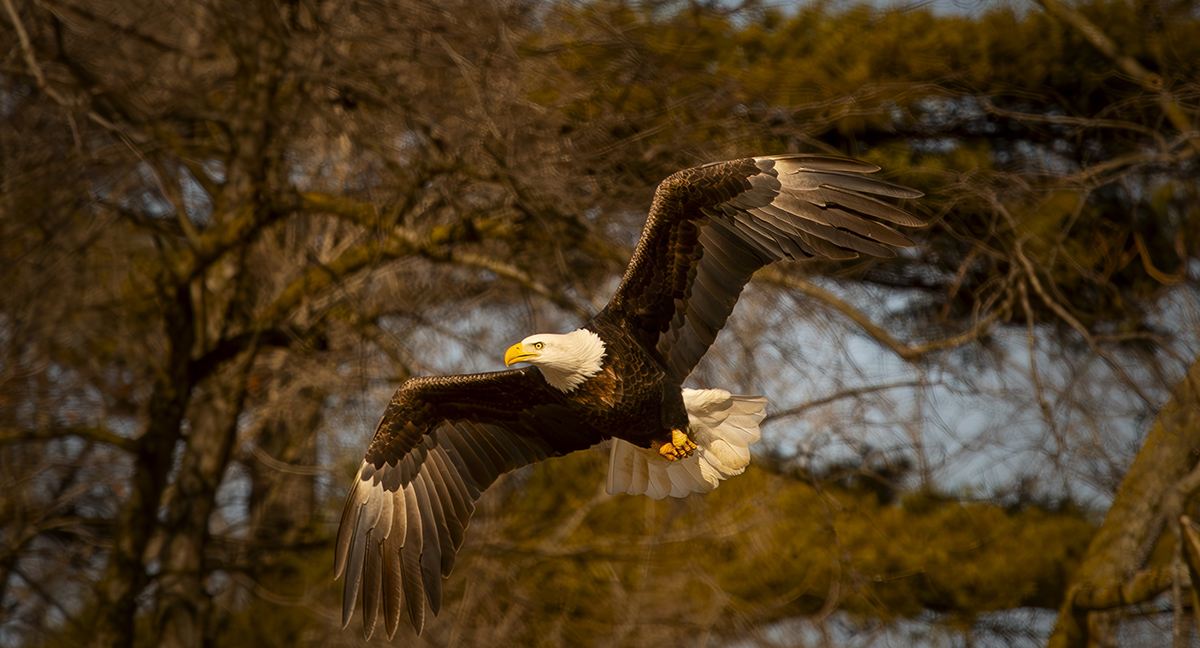Some say that getting lost in nature is when you find yourself. It certainly can help you gain clarity and perspective.
“I’m one of those people who goes great-guns at anything I do,” says Barb Stedman, field trip chair and website manager for the Robert Cooper Audubon Society (RCAS). “Birding and walking outside makes me slow down and grow quiet.”
The mission of the RCAS is to protect and enhance all the habitats that support our natural ecosystems.
“We help others understand how those ecosystems are critical to our own survival,” says Annette Rose, former president of the RCAS. “We can choose to exploit and degrade those ecosystems to the point where they can’t support wildlife, especially our migrating and local bird populations, or we can conserve and improve those habitats for birds.”
The RCAS, which covers seven counties in east central Indiana, began in the 1960s as a local birding club called the Delaware County Audubon Society. In 1974 it became a regional chapter of the National Audubon Society. Members celebrated the 50th anniversary last April.

When someone joins the National Audubon Society, they automatically get assigned to their nearest regional chapter. While RCAS has more than 600 members, roughly 35 of them are active.
One of the first things Catherine Kubo did when she moved to Indiana was join the local Audubon chapter to connect with her tribe.
“That socialization piece is so important,” says Kubo, vice president of the RCAS, adding that extensive knowledge on birds is not required. “Anyone can walk with us.”
Kubo suggests folks join them on one of their monthly Saturday morning walks at Mounds State Park. “It’s a great trip for beginners,” she says. “Even if you’re not interested in learning about birds, plants and wildflowers, you can still enjoy a walk in the woods.”
Birding trips can be restorative and memorable. Stedman recalls a field trip to Jasper-Pulaski Fish & Wildlife Area, the second largest stopover point for migrating sandhill cranes. In November and December, up to 30,000 of these enormous, 3-foot-tall noisy birds descend here.
“I was on a viewing platform looking out on this field where the cranes gathered, doing this socializing flapping and hopping dance,” Stedman says. “Tears came to my eyes because I’d never seen anything like it in my life.”
Rose was once on an autumn walk along an old railroad track after all the leaves had dropped and the first frost of the year had hit. Suddenly she was surrounded by late fall warblers who were hanging upside down, consuming big clusters of poison ivy berries atop the trees.

“It was one of those moments when you realize how things are interconnected,” Rose says. “Typically we fight to get rid of poison ivy in our yards, but what an important part those poison ivy berries play in providing nutrients to these warblers as they make their way to Costa Rica or some Central American country.”
Besides being regarded as one of the most popular hobbies in the country, AARP reports that birding is a great way to keep your mind engaged as you age, since being in nature engages a full range of cognitive activities.
“You find clues to help you identify and understand what something is and how it interacts with other organisms in the environment,” Rose says. “That detective work appeals to children and people of all ages.”
Currently there are 11,000 bird species worldwide with 300 species in Indiana. Not all species migrate. Those that do migrate do so at different times, largely dependent on food resources, which are affected by weather and climate. Starting in April and into May, small perching birds will move through. Many smaller songbirds migrate at night when the weather is favorable. However, if there’s a storm, you may have a bird fallout, which is when severe weather prevents migratory birds from reaching their destination. BirdCast uses weather surveillance radar to forecast the intensity of overnight bird migration across the U.S.
“It tells you what nights you’ll have high migration moving through Indiana or moving through the Central Flyway,” Kubo says.
The RCAS, which meets at the Ball State Environmental Center, welcomes volunteers since much of their conservation and education activities are enhanced by getting help with removing invasive species. They also loan binoculars to local educators so they can lead birding trips with their classes or troops. For the past two years, the RCAS has partnered with Ball State’s elementary education program to help third-graders attend Camp Adventure.
“We provide birding experience and hands-on activities to students so they learn about the important role birds play in our environment,” Kubo says. “When we’re able to identify what we see in nature, that helps us appreciate it and protect it.”
For more information about the Robert Cooper Audubon Society or to learn about upcoming field trips and programming, email admin@cooperaudubon.org or visit cooperaudubon.org.





